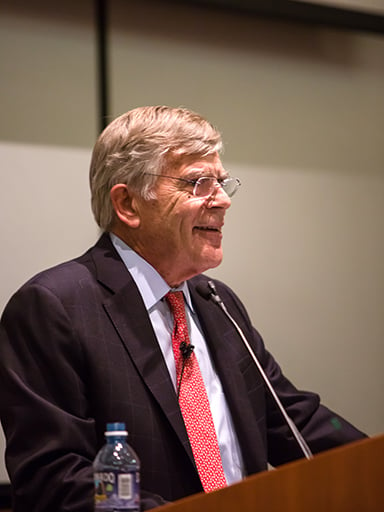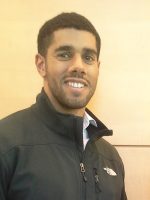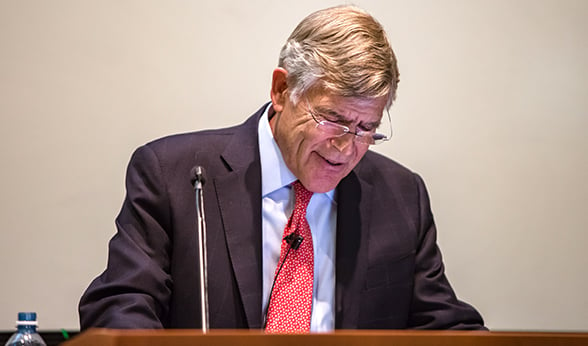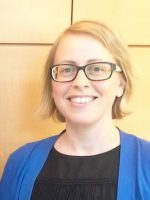Speaking to a very full house at this year’s State of the Campus address, CU Anschutz Chancellor Don Elliman shared his unwavering vision for the university: “to be the place where anyone who needs it can find the finest medical care in the world; where the science of that care is being pushed to new horizons and where the health care workforce of our future is being trained.”
About 250 faculty, staff and students came to the Hensel Phelps West Auditorium in the Research 1 North Building Wednesday afternoon to hear Elliman discuss university progress, strategies and goals. He began his speech with a memory of the 2016 CU Anschutz State of the Campus address, which took place one week before the U.S. presidential election.
 CU Anschutz Chancellor Don Elliman
CU Anschutz Chancellor Don Elliman
“I think it’s fair to say that the last nine months have brought the potential for some very challenging changes in health research and health care,” he said. “With national uncertainty as a caveat though, the headline on the state of our campus and our institutions is that we are in good shape and growing stronger all the time.”
He then laid out his nine strategies for university success, which remain consistent since last year’s address.
1. Invest in clinical excellence
As a testament to the university’s ever-expanding and improving clinical care offerings, Elliman cited several U.S. News & World Report rankings, including University of Colorado Hospital rising five spots to No. 15 and the CU School of Medicine Department of Pediatrics achieving top 10 standing in five specialties.
“As we strive to be the best, these rankings need to continue to rise. What makes it happen is very simple: the recruitment and retention of great faculty. That is you.”
2. Boost NIH funding
Total research sponsorship funding at CU Anschutz increased by 8 percent last year to just over $490 million. About 42 percent of that total – 4 percent more than last year – came from the National Institutes of Health (NIH).
“I believe our focus needs to be on increasing that stream. Most pundits opine that the number of serious players among academic medical centers in research is bound to decline. We have to be one of the winners.”
3. Diversify the university research portfolio
[cucalloutbox align="left" color="" class="" size=""]
He was there:
““I’m pleased to hear that the campus is making an economic impact. It’s also good to see that staff initiatives are aligned with those of university leadership.”
 Ryan Holland, Director of PreAward and Contracting Services
Ryan Holland, Director of PreAward and Contracting Services
[/cucalloutbox]
More than 200 companies from around the world have applied to come to this campus and engage in university partnerships that lead to diverse research and innovation projects. Elliman praised the recently established CU Innovations team for helping make this possible. To accommodate this increase in research enterprise initiatives, the Fitzsimons Redevelopment Authority Board approved the plan and design of a 120,000-square-foot Bioscience 3 Building – construction should begin in spring 2018.
“We are seeing success in research diversity with growing industry funding and clinical trial revenues. Invention disclosures and patent applications are both growing … We’ve become a test bed for commercial innovations.”
4. Increase work in mental health
 Chancellor Elliman
Chancellor Elliman
The university is making strides in this area through the work of the newly renamed National Mental Health Innovation Center, as well as the growing Helen and Arthur E. Johnson Depression Center, which is utilizing telehealth to bring mental health support to rural areas. Grants from the Cohen Foundation and the Marcus Family Foundation enable CU Anschutz to give veterans and their families the mental health care they need, often free of charge.
The university has commissioned a study to catalogue its activity in the area of mental and behavioral health to help connect clinicians and researchers in the field.
“I believe we have an obligation, because of our mission, to up our game in the area of mental health. We have done just that.”
5. Expand health care workforce training
The College of Nursing has expanded its psychiatric nursing education program. Project ECHO received a new $3 million grant to continue its specialty education for physicians, nurses and other providers. And the university has, for the first time, convened a team to explore more possibilities for digital education.
“We have an obligation, I believe, to try to enhance our capacity to educate the health care work force at all levels.”
6. Enhance marketing efforts
Elliman celebrated the press coverage generated within schools and colleges and the work of the Office of Advancement to inform donors of faculty accomplishments. He gave a promise to do more work to tell the university’s story to the world.
“Although much work has been done on developing an overarching message, we have not yet been able to bring that to fruition, and as such, we remain one of the better kept secrets in the region.”
7. Leverage co-location of schools and colleges with hospitals
[cucalloutbox align="right" color="" class="" size=""]
She was there:
“Mr. Elliman brought good energy to the address. I like the message of trying to bridge the silos, and I think it’s exciting to hear the news of CU Anschutz building our own identity.”
 Natalie Buys, Grants and Contracts Manager, Department of Family Medicine
Natalie Buys, Grants and Contracts Manager, Department of Family Medicine
[/cucalloutbox]
While acknowledging efforts in this area, Elliman said we could take better advantage of the co-location of six schools and two hospital systems on one campus. The common success of CU Anschutz, UCHealth and Children’s Hospital Colorado depends on breaking down silos, building bridges, sharing information and nurturing the cross-pollination of ideas, he said.
“I would assess that, in spite of occasional and sometimes strong differences of opinion, those relationships are now either as good as or better than they have been in a long time, perhaps ever … [but] I can’t tell you how many times I hear the expression from faculty that goes something like, ‘I had no idea we were doing that.’”
8. Become more risk-tolerant
Elliman noted that he has signed more indemnification waivers in the last 12 months than he believes the university has ever granted before – and got a hearty laugh from the audience.
“The projects were all judged to be worth it on the risk/benefit ratio, and I am glad the regents delegated the authority to us.”
9. Allocate resources based on priorities
Elliman congratulated the CU School of Medicine for prioritizing work and allocating resources accordingly with its investment in Transformational Research Grants.
“I think it is clear that each school and college is establishing and pursuing its own priorities.”
The driving forces behind this strategic work, Elliman said, include clinical revenue, partnerships, innovation, philanthropy and technology.
“Our foot needs to stay on the accelerator,” he said.
From the details of the nine strategies, he moved on to updates on campus infrastructure and space, which include:
- Aimco’s plans for a new hotel and food market near Fitzsimons Apartment Homes;
- Approval for the university to plan the new $240 million home of the Colorado Center for Personalized Medicine just west of the Research 2 Building;
- 300 new parking permits issued in the past year; and
- University plans for a new parking garage north of the Research 2 Building.
In light of the need for more space on campus, Elliman displayed a photograph of a construction crane and called it the “campus mascot.” Audience members laughed out loud.
Then, he addressed the matter of the university identity and announced plans for CU Anschutz to establish its own website URL, independent of CU Denver.
“I think identity is important, and we need our own: CU Anschutz,” he said. “We do not have a plan today that will get us there, but we will make one.”
Elliman concluded the address with praise and gratitude for the people at CU Anschutz.
“We are built on one simple ingredient: talent,” he said. “The quality of the faculty and staff are both the key to our success and the key to our future. You got us to where we are today. I hope you are as excited as I am, even given the challenges, of where we can be tomorrow."
View the slideshow from the 2017 State of the Campus address.
Discussion from the audience
At the conclusion of the session, audience members watched a video about the university from the Office of Advancement. Then, Chancellor Elliman invited questions from audience members, and several individuals from different units throughout the university grabbed the microphone.
A staff member asked for more information on the recently announced CU Denver | Anschutz chancellors’ efficiencies study. Elliman said he and campus leaders are not yet sure what the results of the study will look like.
“Both campuses have important missions, but those missions are very different, and so is each campus’s business infrastructure,” he said. “At CU Anschutz, we need our own identity, and I promise that will happen.”
Another attendee raised a question about the growing need for vivarium space on campus. Elliman said a portion of the basement in the new building to be built next year has been earmarked for this purpose.
Continuing on the topic of campus space, the final questioner asked about plans for maintaining historic Building 500. The university has spent $8 million in the last two years on Building 500 renovations and has committed to renovating additional floors, as well, Elliman replied.
“It’s cheaper to build new than to renovate,” he said. “We know the need for more space exists, and we want to try to make better use of the space we have.”
https://www.youtube.com/watch?v=2_jq7FN4BOA




